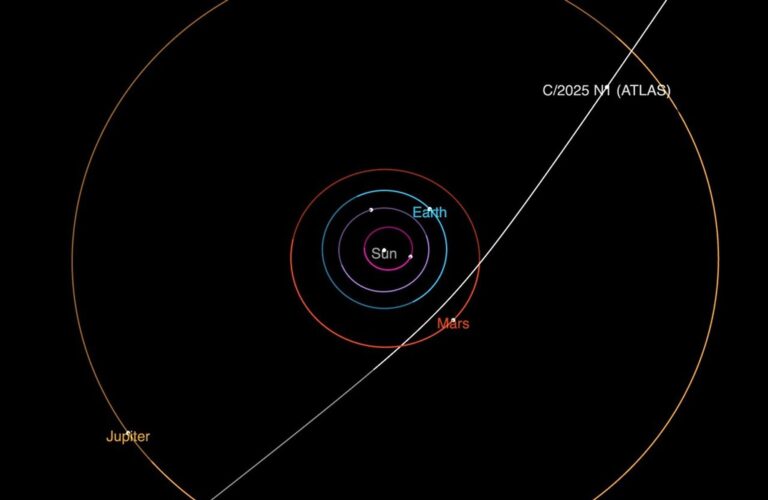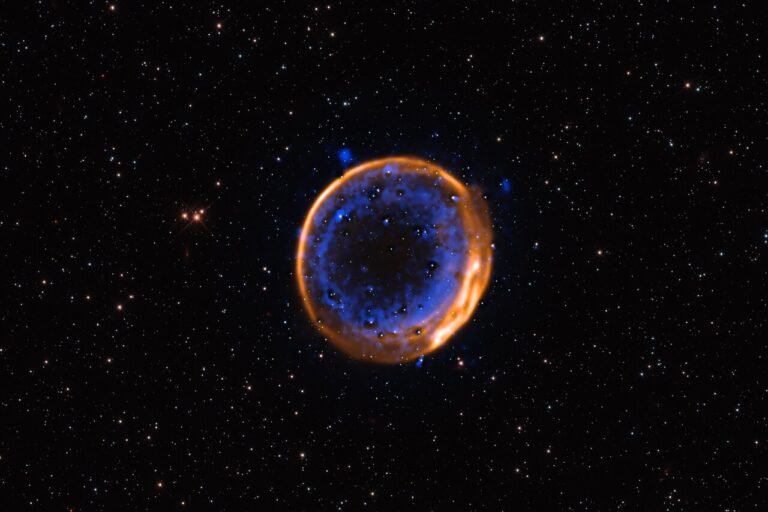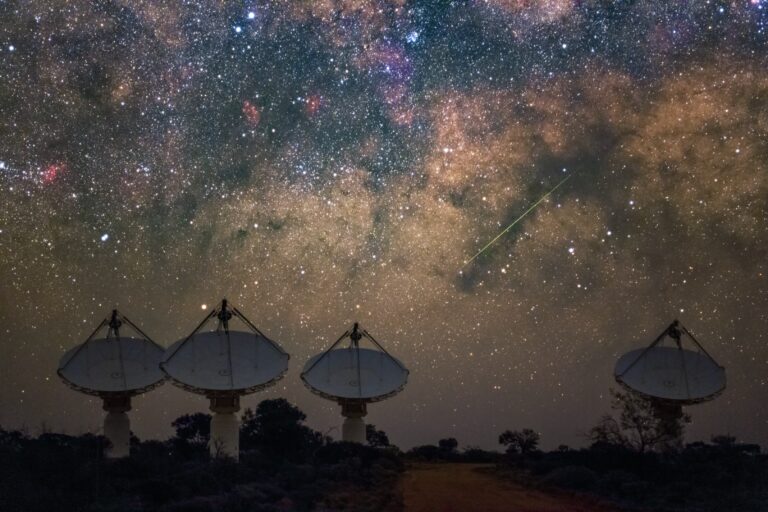
Key Takeaways:
Humanity has long looked at the stars and dreamed of what kind of life might exist elsewhere in the universe. In their book Extraterrestrials: A Field Guide for Earthlings (Camden House, 1994), popular astronomy author Terence Dickinson and science illustrator Adolf Schaller present a series of alien scenarios in which life as we do and don’t know it might exist. Writing at the dawn of exoplanet discovery, the authors speculate on what life might look like on an Earth with lower or higher gravity, with a denser or more tenuous atmosphere, with glacial or jungled surfaces, or as a water world.
When the book was written, the most probable solar system bodies that could potentially host alien life were thought to be Europa and Titan. In the intervening years, our exploration of our solar system with missions like Galileo, Cassini, and New Horizons have revealed that small, icy worlds are more geologically alive than we ever imagined, and subsurface oceans may be common. Ground- and space-based telescopes have also discovered more than 5,000 exoplanetary bodies. Together, these findings have redefined the possibilities for life in our universe.
It is not necessary to find another Earth; any planet that has icy moons could potentially have the right conditions for life to spring forth and flourish.
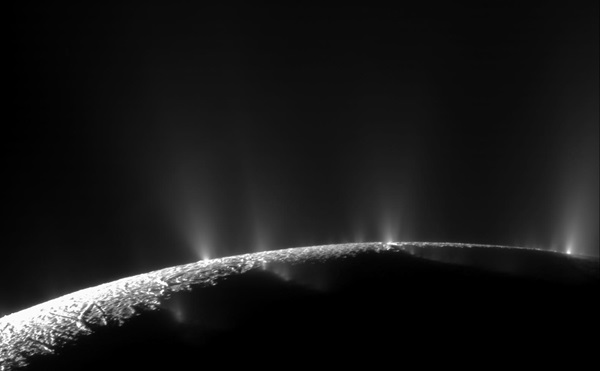
Two main targets
Jupiter’s moon Europa drew much attention with the first flyby images from Pioneer 10 and Pioneer 11 in the 1970s, and even more with the long-term orbiting Galileo mission beginning in 1995. Europa is one of several worlds in our solar system that host surface or subsurface oceans, along with jovian moons Callisto and Ganymede, saturnian moons Enceladus and Titan, and Pluto. Naturally, these bodies are of major interest not only as potential hosts for life, but also because they are accessible to exploration by space probes and landers.
Experts agree that bodies of this nature typically consist of an icy outer shell covering a water layer atop a silicate or metallic core. For larger satellites like Ganymede, internal pressures are so high that ice at depth may form a “water sandwich,” with an ocean located between ice shells.
But on smaller moons like Europa — the smallest of Jupiter’s Galilean moons — the ocean likely sits directly above and in contact with the hot, rocky core, which could provide energy for life to develop. Europa’s internal composition is likely a silicate mantle and nickel-iron core surrounded by an icy crust covering a 60-mile-deep (100 kilometers) ocean. Tidal friction and flexing due to Jupiter’s strong gravitational tug most likely help keep the ocean liquid.
Enceladus is also a strong candidate for a subsurface ocean. Though only some 310 miles (500 km) in diameter and about half the density of Europa, Enceladus is covered with fresh, clean ice. First visited by the Voyager 1 and 2 missions in the 1980s, this moon’s unusual nature was fully revealed by the Cassini-Huygens mission to Saturn, which orbited the system from 2004 to 2017. Enceladus is surprisingly free of impact craters, indicating that it continually renews its outer, near-homogeneous white layer of mostly water ice. Long, linear tectonic fractures contain geysers that release water vapor and other gases, strong evidence that a large body of liquid water exists below the crust.
If life has indeed gained a foothold on such worlds, what might it look like and how would it obtain its energy? In their book Imagined Life (Smithsonian Books, 2019), authors James Trefil and Michael Summers contemplate two types of ice worlds, which they name Iceheim and Nova Europa.
The first only contains bubbles of liquid water beneath a thick layer of ice, while the latter has a metallic core and rocky mantle surrounded by a deep ocean with a relatively thin ice covering.
Based on current thinking about planetary formation, such worlds may be quite common. Because the only comparable environments on Earth lie deep in our oceans, scientists are studying them to learn what chemical and biological signatures future space probes to Europa and Enceladus should look for.
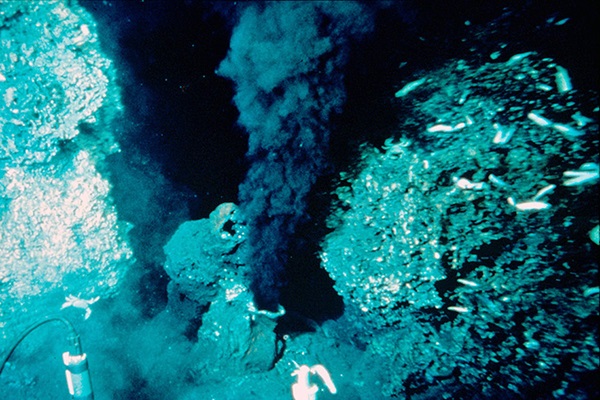
Terrestrial analogues
Earth’s deepest fissure, the Mariana Trench, despite a total absence of sunlight, is teeming with complex life. Life is also abundant in our midocean ridge system, which wraps around the globe and forms the most extensive arrangement of mountains on the planet. As tectonic plates creep apart there, hydrothermal vents form, gushing warmth and supporting whole communities of organisms.
These communities were first directly observed in 1977 during the Galapagos Hydrothermal Expedition, by a team of scientists from several U.S. institutions using deep-sea probes and submersibles. This included the extraordinary crewed submersible Alvin, commissioned in 1964 for the Woods Hole Oceanographic Institution and still operational today.
In Oceanus magazine, marine geologist Robert Ballard, one of the expedition’s scientists, reports, “When they reached their target coordinates, Alvin and its three-man crew entered another world.” Coming out of small cracks across the lava terrain was warm, shimmering water that rapidly turned cloudy blue as manganese and other chemicals in solution precipitated out and deposited brown stains on the surrounding surface.
“But even more interesting was the presence of a dense biological community living in and around the active vents,” Ballard writes. The vents, termed black smokers, result from seawater flowing into the fracture; becoming enriched in different elements; and then expelled as hot (up to 750 degrees Fahrenheit [400 degrees Celsius]), acidic fluids through chimneylike structures. Though it did not garner much public attention at the time, this discovery has been likened in importance to landing on the Moon.
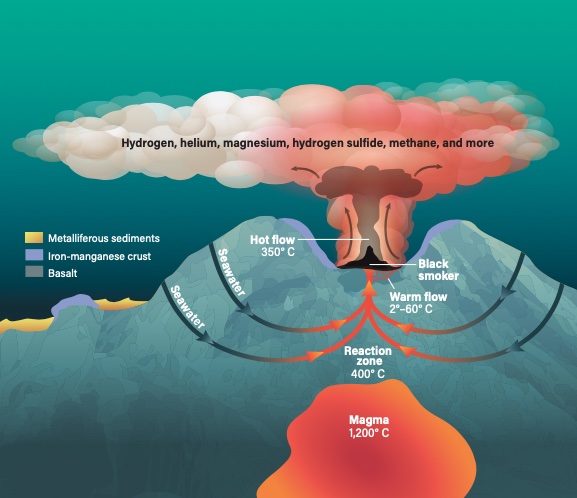
How did life start?
Exciting as these bio-communities are, it remains unclear how, when, and where they — and life on Earth — originated. It may have been when our oceans first formed; in 2016, Stacey Worman at Duke University and colleagues reported that hydrothermal vent sites contain many of the basic chemical ingredients needed for life, including abiotically (without the presence of life) generated molecular hydrogen, a major energy source for microbes beneath the seafloor. Other energy sources for microorganisms in anoxic (oxygen-free) aquatic environments are the methane and sulfur compounds used by many archaea. (Archaea are thought to be the earliest forms of life on Earth, tracing back at least 3.5 billion years.)
Not surprisingly, such scattered marine bio-communities differ widely across the globe. Does this imply separate origins or simply adaptations to different environments? Probably the latter, due to variations in seafloor topography, tectonic movement, current changes, and inconsistent nutrient availability.
All this shows that life on our planet is amazingly adaptable. For example, many organisms in Arctic and Antarctic environs have evolved a special class of antifreeze proteins that bind to ice crystals, stopping them from further growth and causing fatal cellular damage.
At the other extreme, we find hyperthermophile bacteria in hot springs and deep ocean vents capable of surviving temperatures up to — and past! — the boiling point of water. Undoubtedly the hardiest microbe we know of is the bacterium Deinococcus radiodurans, first discovered in tins of meat that had been radiated in an attempt to sterilize them. Not only can it survive cold, dehydration, vacuum, and acid, but it’s also the most radiation-resistant organism known, thriving in levels a thousand times higher than humans can tolerate. Such extremophiles reveal that evolution is powerful and raise the question of whether there are limits to this process. Given that terrestrial life has adapted to a wide range of conditions, could alien life be equally malleable?
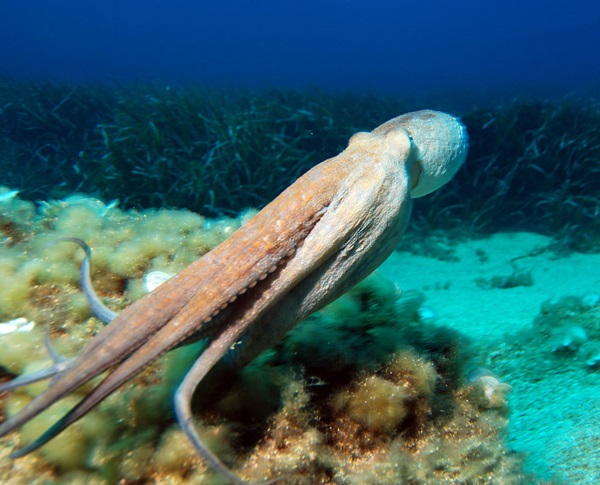
Alien water life?
Some of the most advanced and intelligent animals today are birds and mammals; among mammals, our closest evolutionary relatives include apes and monkeys, which often exhibit social traits embarrassingly similar to ours.
Perhaps most remarkable though, are cetaceans, including whales, porpoises, and dolphins. Animal behaviorists generally agree that bottlenose dolphins are self-aware and possibly capable of abstract thinking. However, like all mammals, they first evolved on land; only later did they adapt to aquatic environments. So, can truly intelligent animals originate in water?
The answer seems to be yes, at least in the case of the remarkably complex octopus. Unlike vertebrates, which have a central brain, these cephalopods have a decentralized system that extends throughout their bodies. In addition to a sizable central brain in their heads, they also possess what might be called “mini-brains” at the ends of their tentacles. This diversified nervous system allows them to quickly adjust their skin pigmentation to match their physical surroundings, a camouflaging capability useful both for hiding from predators and catching prey. Octopuses also exhibit higher-order cognitive abilities, including problem-solving and even a degree of social interaction with humans.
Because they are soft-bodied animals, their evolutionary history is difficult to trace for lack of distinctive fossils. But the nervous systems of these boneless, totally aquatic creatures seems to have evolved in a convergent, almost parallel manner to that of land vertebrates. Perhaps intelligence is a trait that evolution converges on, like wings, which evolved several times in various land animals. As Cambridge University zoologist Arik Kershenbaum writes in his book The Zoologist’s Guide to the Galaxy: What Animals on Earth Reveal About Aliens — and Ourselves (Penguin, 2021), “On Earth, flight evolved four different times in four different groups: in birds and bats and pterosaurs and insects. The fact that they all use wings isn’t because they evolved on Earth; it’s because it was advantageous to fly, and wings are just about the only way to fly. And so, we can expect these constraints to be operating everywhere in the universe.” The fact that intelligence has evolved multiple times on Earth — on land and in the sea — suggests that it could also happen on alien worlds.
It seems entirely plausible that intelligent, even self-aware beings could evolve over time on alien water worlds. What might such creatures look like: octopuses, dolphins, or humans? Most likely none of these. Rather, they would be creatures unique to their world and its particular physical and chemical environment and life-supporting resources.
It’s possible their advancement could be limited due to environmental constraints. Take dolphins, for example. Even if they became math savvy and capable of abstract thinking, lacking the equivalent of hands might seriously limit their ability to develop tools or advanced technologies. Still, it’s fun and instructive to speculate, as Trefil and Summers have done, with their fictitious Europa-like world in Imagined Life.
Assuming the denizens of Nova Europa evolved appendages to handle things like rocks and shells, might that lead to more complex tools? Lacking fire, they might be able to forge tools from molten rock and metal at ocean vents.
Considering that our first tools were chiseled rocks and flint, leading to axes and spears, who knows how far curiosity and intelligence might propel some intrepid alien octopus over time? What if they eventually made their way through the ice barrier encapsulating their world? Their worldview would undoubtedly undergo a profound change, just as ours did after Copernicus showed we are not the center of the universe.

More data, please
Before speculating further, of course, we must return to hard science. Exciting new steps in that direction will be the European Space Agency’s JUpiter ICy moons Explorer (JUICE), which is slated to launch Friday (April 14, 2023), and NASA’s Europa Clipper mission in 2024.
JUICE (see here for a more detailed overview of the JUICE mission) will focus on Ganymede, Callisto, and Europa, Jupiter’s three Galilean moons thought to hold significant subsurface bodies of water. Europa Clipper will enter orbit around Jupiter with several planned flybys of Europa and carry instruments to evaluate the moon’s potential habitability. In particular, the craft will study Europa’s chemical composition and other properties. Future missions are expected to include landers for direct surface exploration.
Clearly, exciting times lie ahead in our quest to find life beyond our home planet and prove whether or not we have company in the universe.






